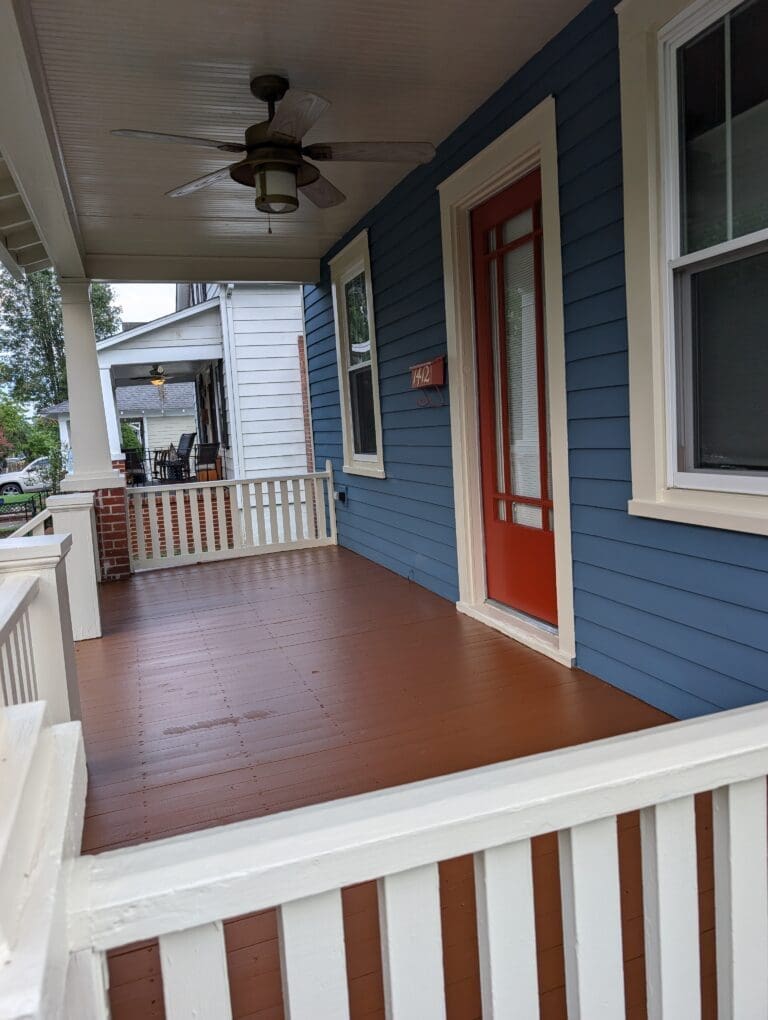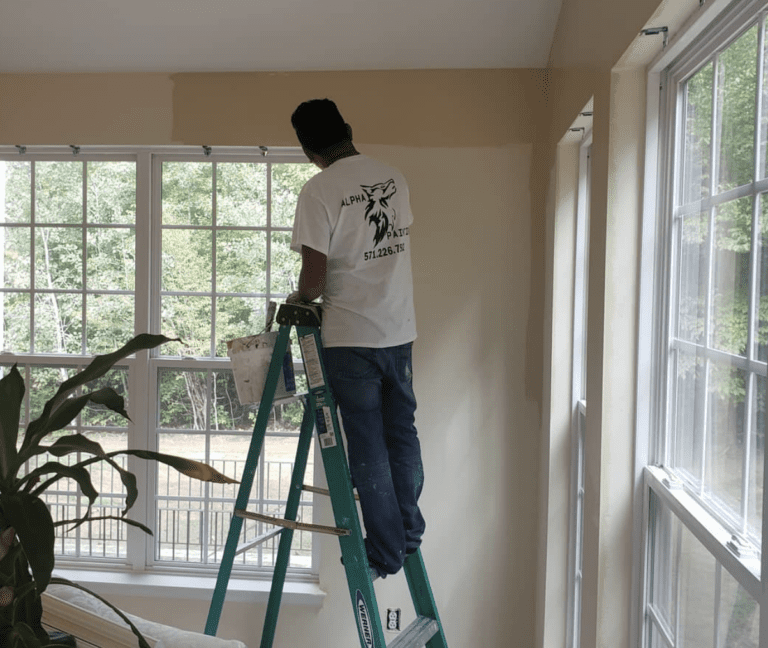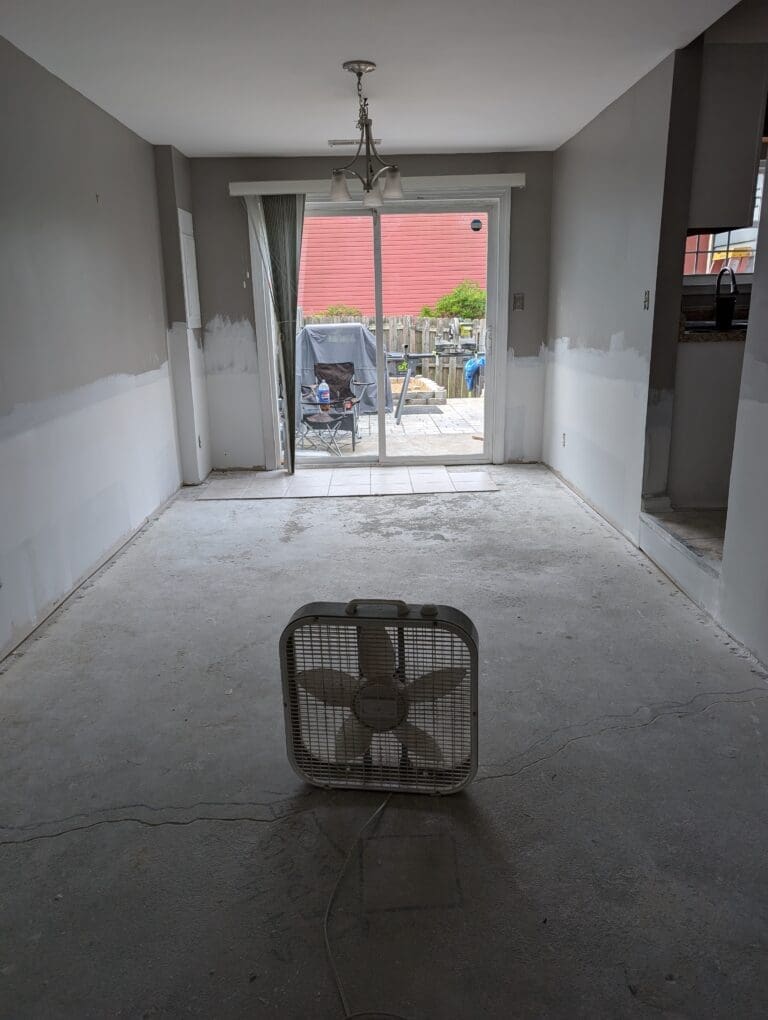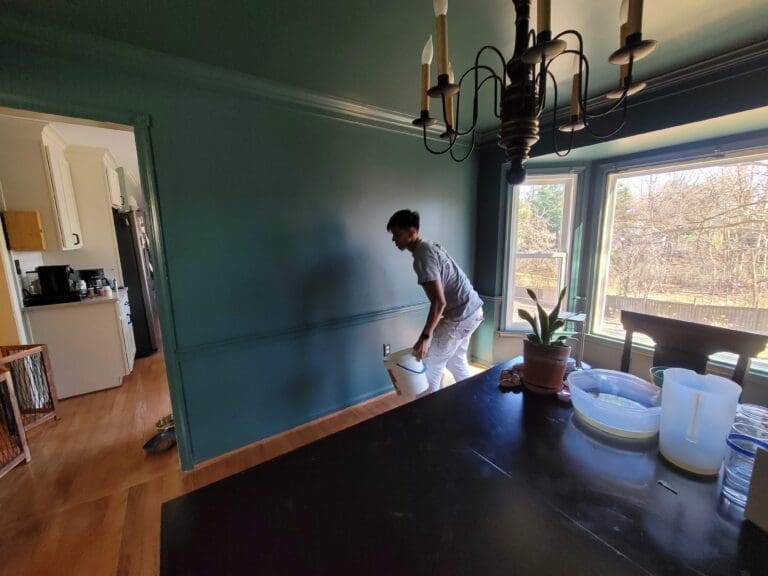Rental Property Repainting for Landlords – Things to Remember
Repainting rental properties is one of the most cost-effective ways to preserve their value and boost tenant appeal. A fresh coat of paint makes a strong impression during showings and reassures tenants that the property is being properly maintained. But not all repainting projects are created equal. Landlords need to think beyond color swatches and consider how timing, materials, and professional execution impact long-term results. At Alpha Painting LLC, we often guide property owners through these decisions to ensure each repaint supports both property upkeep and business goals.
Table of Contents
Understanding the Role of Painting in Property Appeal
A well-executed paint job makes a rental property feel updated and cared for. The exterior, often the first impression, affects curb appeal and tenant interest. Interior walls reflect the feel of livability, cleanliness, and pride in ownership. Selecting quality paint and professional application helps reduce stains, wear, and need for frequent touch-ups. Painting becomes not just an aesthetic detail but an investment in tenant satisfaction and cost-effective upkeep.
Timing and Frequency: When to Repaint
Determining repaint timing involves more than ticking off a maintenance calendar. Exterior paint may start to fade or peel after 5 to 7 years, depending on exposure to sunlight, humidity, and local weather patterns. Interior walls, especially in living rooms, kitchens, and hallways, can need refreshing every 3 to 5 years. Pay particular attention to rental turnover times and lease transitions. Coordinating repainting with vacancy periods ensures minimal disruption and allows thorough preparation.
Factors like kitchen splatter zones, kids’ rooms, and pet areas call for more frequent touch-ups. Checking regularly for surface damage, staining, or odor absorption ensures the paint still performs effectively. Even in between major cycles, minor touch-ups can delay the need for a full repaint. Consider a mid-lease walkthrough to catch minor scuffs and stains while they’re easy to correct.
Choosing the Right Paint for Performance and Durability
Not all paint is created equal. Low-VOC or zero-VOC options support better indoor air quality, causing less odor and fewer health concerns—particularly important when multiple tenant turnovers happen in quick succession. For high-traffic areas, select scrubbable paints labeled “washable” or “stain-resistant.” These finishes resist common marks and allow cleaning without damaging the surface.
Exterior choices demand more care. A high-grade acrylic latex paint with UV protection and mildew-resistant properties offers the best longevity in most climates. If the property includes wood trim or stucco, a paint designed for those substrates further extends lifespan. Pairing primer with topcoat systems enhances adhesion and surface endurance, reducing flaking or blistering.
Surface Preparation: Foundation of a Long-Lasting Finish
Preparation defines the final outcome. From patching holes caused by tenant wear to sanding rough patches, surface prep ensures paint adheres properly. Exterior walls may need power washing to remove dirt, mildew, or chalking. Any cracking or peeling primer should be addressed before coats are applied. Failure to properly prepare often leads to premature peeling or color inconsistency.
Priming bare drywall, repaired areas, and porous surfaces seals them. It improves topcoat appearance and may reduce total paint needed for full coverage. In kitchens and baths, moisture-control primers combat mold or mildew behind paint. A skilled painter treats these steps as essential—not optional—and that informs longevity and visual excellence.
Color Selection: Balancing Neutrality and Character
Landlords should lean toward neutral palettes for repainting. Colors such as light gray, beige, or soft cream create a fresh, spacious feel and appeal to a broad range of tenants. They help conceal minor marks and adapt well to tenants’ furniture styles. Neutral schemes also ease decision-making when covering previous tenant color choices or blending hallways and common areas into a cohesive aesthetic.
Still, strategic accent walls offer subtle character. In living rooms, a deeper but tasteful tone may elevate ambiance, while bedroom accent walls provide warmth. Such treatments must be minimal and professionally applied so as not to deter future tenants. Investing in timeless, appealing color selection contributes to lease longevity and fewer renewal complications.
Professional vs. DIY: Why Hiring Experts Often Pays Off
The quality difference between amateur and professional paint jobs matters. A licensed painter brings experience in prepping uneven surfaces, using appropriate caulking, creating clean lines, applying with correct tools, and ensuring proper drying conditions. They also manage logistics: moving furniture, protecting floors, disposing of waste, and maintaining safety.
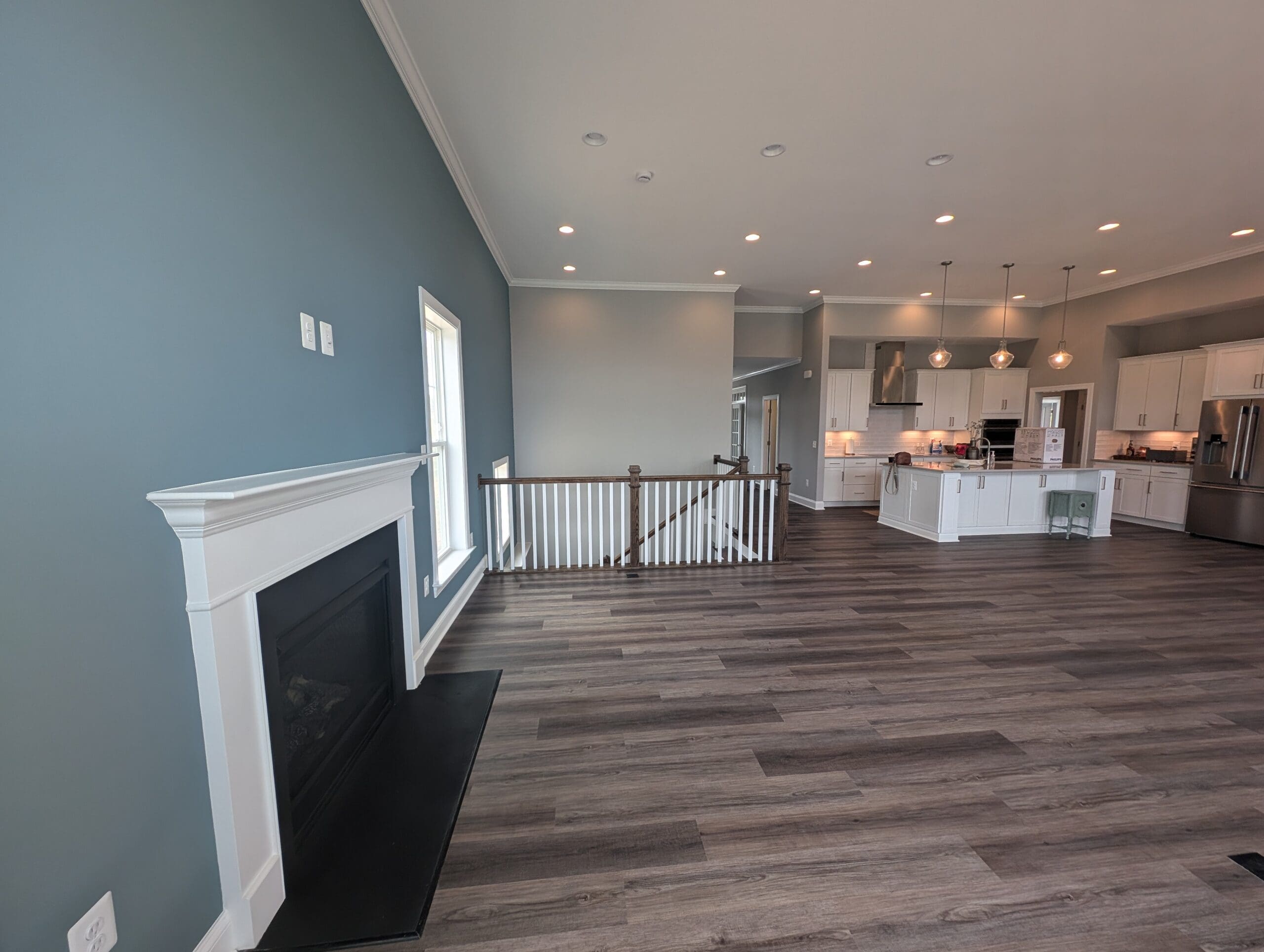
DIY attempts may seem cost-saving but often lack finishing touches: even coverage, error-free edges, and consistent sheen. Landlords who try DIY frequently end up calling professionals later to correct issues. Investing in skilled application upfront typically reduces long-term maintenance and appearance problems—and saves money over multiple painting cycles.
Alpha Painting LLC offers end-to-end service including color consultation and site protection, tailoring finishes to both budget and longevity. This helps property managers keep units competitive and well-maintained.
Budgeting and Estimating Costs Accurately
Estimating painting costs requires more than calculating square footage times price per gallon. Labor considerations—wall repair, caulking, scaffolding for exteriors, high ceilings, and trim—affect the final tally. Typically, landlords should allocate between $1.50 to $3.50 per square foot for interior work, and $1.75 to $4.50 per square foot for exterior work. Prices vary locally and depend on surface condition and material type.
Open communication with painters ensures accurate quotes and identifies area-specific costs. Asking for line‑item estimates helps budget and prevents surprise charges. Planning repaint expenses alongside routine maintenance ensures clarity when operating costs are reviewed quarterly or yearly.
Compliance and Safety: Regulations Every Landlord Should Respect
Older properties may have lead-based paint. Federal regulations, enforced by EPA’s Renovation, Repair, and Painting (RRP) Rule, require certified professionals during renovations in homes built before 1978. Noncompliance risks penalties and tenant safety. Qualified painting contractors should provide proof of RRP certification and operate with lead-safe practices.
Ventilation and indoor safety are essential. Asbestos-containing textured ceilings may require special handling. Pricing services with licensed inspectors before commencing work avoids liability. Also consider insurance coverage for painters in case of damage—liability and workers’ compensation protect landlord and tenant interests.
Coordinating Repainting with Move-Out and Move-In Dates
Scheduling repainting around tenant turnover demands finesse. The ideal window is between skip-out and new tenant move-in, allowing painters unrestricted access. This window avoids disrupting tenant routines and ensures proper drying before someone moves in. Exterior painting during cold or rainy weather risks uneven drying; interior painting too close to a move-in leads to residual odors.
To create a smooth repainting timeline, landlords should require tenants provide at least 14 days’ notice before vacating. Scheduling interior painting during daytime helps painters work efficiently and lets landlords perform final inspections. Good communication ensures timing aligns with lease transitions, minimizes vacancy days, and supports tenant satisfaction.
Quality Control: Inspecting the Finished Job
Even the best painters benefit from landlord-level inspection after completing work. A walkthrough verifies sheen consistency, crisp trim lines, secure fixtures, and clean tape edges. Lighting tests reveal missed spots. Walls should feel even to the touch, with no lumps or run-off drips.
If issues arise, document them immediately and arrange corrections before tenant move-in. A final report—before and after photos—supports maintenance records and justifies security deposit deductions tied to tenant-caused damage versus wear-and-tear.
Maintenance Tips to Extend Paint Life
Post-repaint care enhances durability. Encourage tenants to use gentle cleaners like mild soap and sponge for wall marks instead of harsh chemicals. Regularly inspect areas like kitchens and bathrooms for moisture damage and install exhaust fans to reduce mildew. Encourage use of felt pads under furniture to prevent scuffs.
For exteriors, perform annual inspections. Trim bushes to prevent moisture-trapped and paint-destroying mold. Replace peeling caulk around windows and doors. Promptly touch-up chips and cracks to keep the paint sealed. A proactive approach through scheduled inspections prevents major repainting cycles and maintains property appearance.
Record-Keeping and Long-Term Strategy
Maintain a detailed paint log for each property: date, paint brand, color code, sheen, preparations done, contractor name, and cost. Label stored touch-up cans with date and room. This archive simplifies future matches and ensures consistency. Tracking service providers and lifecycle costs supports budgeting and improves profitability.
Consider scheduling property-wide repainting every 4 to 7 years—with minor touch-ups in-between. This predictable rhythm helps manage capital costs and keeps the property looking fresh throughout leasing cycles. Planning ahead reduces emergency maintenance and tenant dissatisfaction.
Final Thoughts
Repainting rental properties is more than just routine upkeep—it’s a strategic move that supports tenant satisfaction and property value. Smart timing, proper materials, and professional application help minimize long-term costs and reduce turnover issues. With a consistent approach to maintenance and planning, landlords can keep their rentals looking sharp and performing well year after year.


